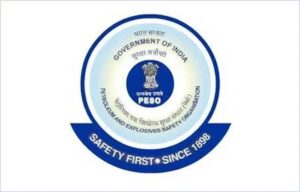ATEX/PESO
Understanding ATEX/PESO Certification: Ensuring Safety and Compliance for Equipment Used in Hazardous Areas
Implementation of ATEX for Ensuring Explosion Prevention

Introduction To ATEX / PESO Certification
One of the key European directives in line with the New Legislative Framework is the ATEX Directive 2014/34/EU. It establishes specifications and the Essential Health and Safety Requirements (EHSRs) for the design and building of protective systems and electrical and non-electrical equipment meant to be used in potentially explosive environments.
Why ATEX Certification?
ATEX certification is required for any equipment or protective gear that is intended for operation in potentially explosive environments and has its own source of ignition. If used in accordance with manufacturer recommendations, ATEX certification guarantees that equipment will operate safely in explosive environments without causing any accidents. In the European Union (EU) and the European Economic Area (EEA), equipment used in explosive environments needs to be ATEX certified.
Before exporting equipment or protective systems to Europe, the manufacturer, his authorized representative, the importer, and the distributor must make sure that their product complies with all applicable health and safety regulations and has undergone the necessary conformance procedures.
What Are ATEX Applicable directives?
When working in environments where there is a risk of explosion, EU organizations are required to abide by regulations.
The following two ATEX Directives apply to both equipment users and manufacturers:
Equipment and protective systems meant for use in potentially explosive environments are governed by the ATEX Directive 2014/34EU.
Minimum standards for enhancing the safety and health protection of employees who may be at danger from explosive environments are outlined in the ATEX Workplace Directive 1999/92/EC.
On April 20, 2016, the Directive 2014/34/EU came into force. Manufacturers are impacted in the following ways:
As stated in Article 44 of the regulation, producers must comply with regulation 2014/34/EU as of April 20, 2016, for any new or updated certifications.
The Directive mandates that all EU Type Examination certifications and certifications of Conformity must have a risk analysis submitted by the maker to the Notified Body (UL).
Manufacturers’ EU Declaration of Conformity shall make reference to Directive 2014/34/EU.
Importers (into EEA) should be aware of a variety of legal requirements, including marking.
How do we define EX equipment
All the equipment that is stored, traded and used in hazardous areas like but not limiting to
- Automotive refuelling stations or petrol stations
- Oil refineries, rigs , Chemical processing plants
- Printing industries, paper and textiles
- Hospital operating theatres
- Aircraft refuelling and hangars
- Grain handling and storage
- Woodworking areas
- Sugar refineries
- Metal surface grinding, especially aluminium dusts and particles
Approvals of Ex (electrical) Equipment used in Hazardous areas in India
India being a member of IECEx forum, the testing and certification as per the standards of IECEx is accepted.
For approval of Ex (Electrical) Equipment for use/installation in Hazardous Areas in various defined zones, requires approval by the Chief Controller of Explosives.
Petroleum and Explosives Safety Organisation
Petroleum and Explosives Safety Organisation (PESO) is a regulatory authority with autonomous status, headquartered at Nagpur.
It is a department with a history of over a century, completing 100 years in September 1998, and was formerly known as the Department of Explosives.
This Organisation comes under, Ministry of Commerce and Industry, Department for Promotion of Industry and Internal Trade, Government of India.
Related Services
Click here to know about the Bureau Of Indian Standard (BIS)
Click here to know about the Telecommunication Engineering Centre(TEC)
Click here to know about the Wireless Planning & Coordination (WPC)
Click here to know everything about ISI Certification Scheme
Click here to know everything about Bureau Of Energy Efficiency (BEE)
Click here to know everything about E-Waste Management
Click here to know everything about Automotive Industry Standards (AIS)
Click here to know everything about Legal Metrology
Click here to know everything about MNRE
Click here to know everything about ATEX/PESO
Other Countries
Click here to know about the Approval Process for the Canadian Market
Click here to know about the SRCC certifications
Click here to know everything about CE Marking
Click here to know everything about E Mark
Click here to know everything about Type Approval for Fiji
Click here to know everything about Type Approval for Hong Kong
Click here to know everything about India Approvals
Click here to know everything about PSE Mark
Click here to know everything about MIC Certificate
Click here to know everything about Type Approval for Malaysia
Click here to know everything about Type Approval for Russia
Click here to know everything about Type Approval for Saudi Arabia
Click here to know everything about Type Approval for South Africa
Click here to know everything about Type Approval for Singapore
Click here to know everything about Type Approval for South America
Click here to know everything about Type Approval for South Korea
Click here to know everything about NCC Certificate
Click here to know everything about BSMI Mark
Click here to know everything about Type Approval for USA
Company Strengths at a glance
Why C-PRAV?
C-PRAV has vast experience both on the technical qualification and experience in handling ATEX projects
We Solve Real Problems
ASK US ANYTHING
PESO stands for Petroleum and Explosives Safety Organization. It is the regulatory body under the Department for Promotion of Industry and Internal Trade (DPIIT) in India. PESO is responsible for formulating and enforcing safety regulations related to petroleum, explosives, and compressed gases in the country.
The primary objectives of PESO include ensuring the safe handling, storage, transportation, and use of hazardous materials, as well as preventing accidents, protecting public safety, and safeguarding the environment. PESO establishes and enforces standards, guidelines, and procedures for various industries and sectors that deal with petroleum, explosives, and compressed gases.
PESO oversees the licensing, approval, and certification processes for manufacturers, importers, distributors, and users of hazardous materials and related equipment. It conducts inspections, audits, and tests to verify compliance with safety regulations and takes appropriate enforcement actions in case of non-compliance.
When seeking PESO certification in India, having either ATEX or IECEx certification can facilitate the process and serve as evidence of compliance with the required explosion protection standards. The specific requirements and validity periods for PESO certification would depend on the regulations and guidelines set by PESO for the particular product category.
No, ATEX and PESO are not the same. They are two different regulatory frameworks related to the management of hazardous environments, but they are applicable in different regions.
ATEX: ATEX (ATmosphères EXplosibles) is a European Union directive that governs equipment and protective systems intended for use in potentially explosive atmospheres within the European Union and the European Economic Area (EEA). It sets out the requirements for manufacturing, placing on the market, and using equipment in hazardous environments to ensure their compliance with safety standards and minimize the risk of explosions.
PESO: PESO (Petroleum and Explosives Safety Organization) is an Indian regulatory body under the Department for Promotion of Industry and Internal Trade (DPIIT) that is responsible for the safety of petroleum, explosives, and compressed gases. PESO oversees the implementation of various safety regulations and standards, including those related to hazardous areas, explosive materials, and the transportation, storage, and use of petroleum products and explosives in India.
Yes, it is generally possible to assemble two or more ATEX-certified products. However, certain guidelines and precautions need to be followed to ensure the overall safety and compliance of the assembled system. Here are a few key considerations:
Compatibility: Ensure that the ATEX-certified products are compatible with each other in terms of electrical, mechanical, and operational aspects. This includes verifying that the voltage, current, temperature range, and other specifications are within the allowable limits of each component.
Certification Verification: Check the ATEX certifications of the individual products to ensure they are suitable for the intended hazardous environment and have the necessary protection levels (e.g., gas groups, temperature class) required for the specific application.
Documentation and Instructions: Follow the manufacturer’s instructions and documentation provided with each ATEX-certified product for proper installation, assembly, and maintenance. Pay attention to any specific requirements or limitations mentioned by the manufacturers.
Compatibility with Ex Zones: Consider the specific hazardous zones (Ex zones) in which the assembled system will be operated. Ensure that the ATEX certifications of the components cover the corresponding Ex zones and that the collective system does not create any additional hazards.
Risk Assessment: Conduct a comprehensive risk assessment to identify any potential safety hazards or conflicts that may arise from the assembly of multiple ATEX-certified products. Mitigate and manage these risks appropriately through engineering controls, procedural measures, or other relevant means.
Yes, it is generally possible to repair ATEX-certified products. However, it is crucial to follow specific guidelines and procedures to ensure that the repaired product maintains its ATEX certification and continues to meet the necessary safety requirements
Yes, ATEX (ATmosphères EXplosibles) is a European standard that regulates equipment and protective systems intended for use in potentially explosive atmospheres. It stands for two European Union directives:
Directive 2014/34/EU, known as the ATEX Equipment Directive: This directive provides the requirements for manufacturing and placing equipment and protective systems on the market within the European Union.
Directive 1999/92/EC, known as the ATEX Workplace Directive: This directive focuses on the protection of workers in potentially explosive atmospheres employees.
Regulatory Updates
India’s Machinery Safety Regulations Get a Major Update – Effective from September 2026
The Ministry of Heavy Industry has issued a significant update through the Machinery and Electrical Equipment Safety (Omnibus Technical Regulation) Amendment Order, 2025. This amendment
Update on Low-Voltage Switchgear Certification in India
In electrical engineering and infrastructure, low voltage switchgear plays a crucial role in maintaining safety, reliability, and efficiency. These systems are responsible for protecting electrical
EU Regulatory Update: Decision (EU) 2025/893
EU Regulatory Update: Decision (EU) 2025/893 On 14 May 2025, the European Commission published Decision (EU) 2025/893, amending the list of harmonised standards under the Radio Equipment
India’s Machinery Safety Regulations Get a Major Update – Effective from September 2026
The Ministry of Heavy Industry has issued a significant update through the Machinery and Electrical Equipment Safety (Omnibus Technical Regulation) Amendment Order, 2025. This amendment
Update on Low-Voltage Switchgear Certification in India
In electrical engineering and infrastructure, low voltage switchgear plays a crucial role in maintaining safety, reliability, and efficiency. These systems are responsible for protecting electrical
EU Regulatory Update: Decision (EU) 2025/893
EU Regulatory Update: Decision (EU) 2025/893 On 14 May 2025, the European Commission published Decision (EU) 2025/893, amending the list of harmonised standards under the Radio Equipment

